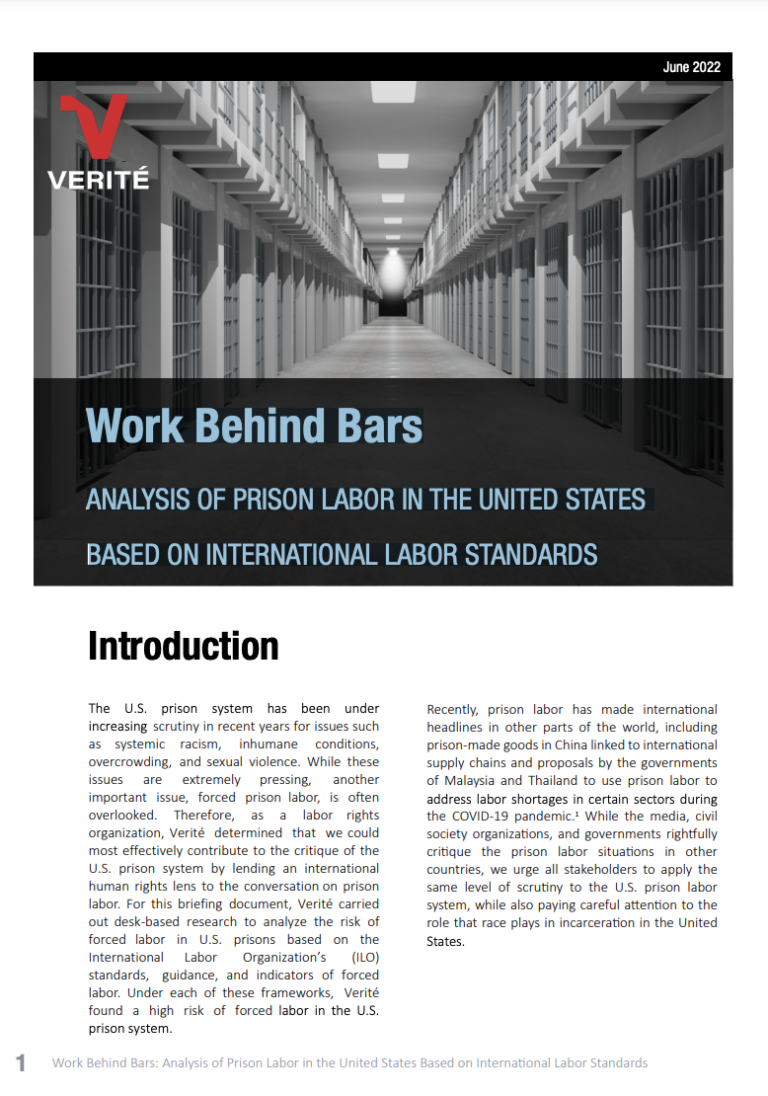The U.S. prison system has been under increasing scrutiny in recent years for issues such as systemic racism, inhumane conditions, overcrowding, and sexual violence. While these issues are extremely pressing, another important issue, forced prison labor, is often overlooked. Therefore, as a labor rights organization, Verité determined that we could most effectively contribute to the critique of the U.S. prison system by lending an international human rights lens to the conversation on prison labor. For this briefing document, Verité carried out desk-based research to analyze the risk of
forced labor in U.S. prisons based on the International Labor Organization’s (ILO) standards, guidance, and indicators of forced
labor. Under each of these frameworks, Verité found a high risk of forced labor in the U.S. prison system. Recently, prison labor has made international headlines in other parts of the world, including
prison-made goods in China linked to international supply chains and proposals by the governments of Malaysia and Thailand to use prison labor to address labor shortages in certain sectors during
the COVID-19 pandemic. While the media, civil society organizations, and governments rightfully critique the prison labor situations in other countries, we urge all stakeholders to apply the same level of scrutiny to the U.S. prison labor system, while also paying careful attention to the role that race plays in incarceration in the United
States.

